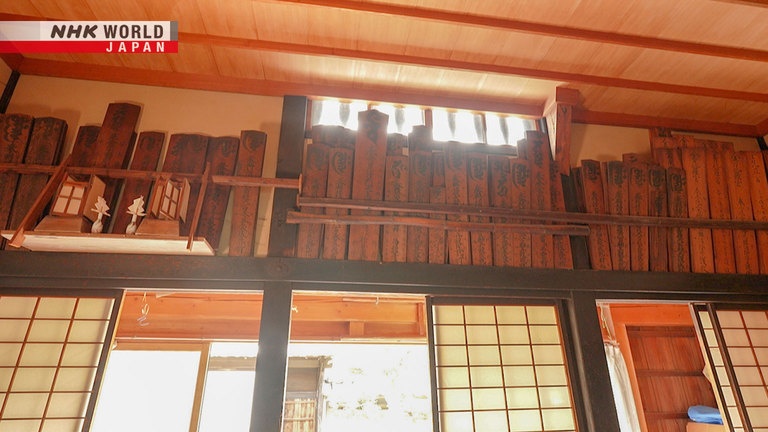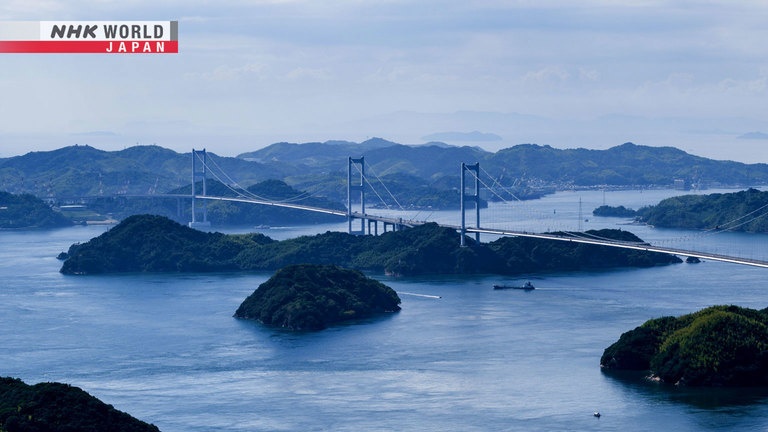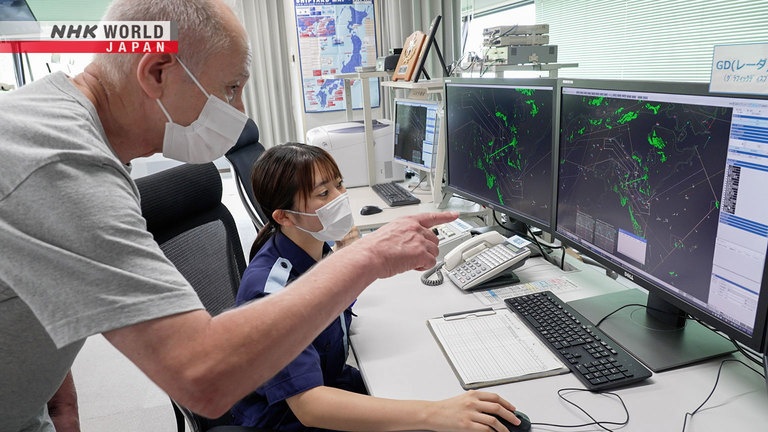The Samurai of the Sea: The Murakami Legacy
*First broadcast on December 15, 2022.
Around 500 years ago, sea traffic in the Seto Inland Sea was monitored and controlled by a group called the "Murakami Kaizoku." The word "kaizoku" translates to "pirates," but these seafarers weren't thieves; they actually helped to keep the area safe. In the second of two episodes about the Murakami Kaizoku, we go to the clan's island birthplace and visit a home that has many related historical artifacts. We also learn how the story of the Murakami Kaizoku is being told in fiction and drama.



Transcript
Hello and welcome to Japanology Plus.
I'm Peter Barakan.
Behind me you'll see the Seto Inland Sea.
The many small islands in its waters
once played home to Japan's
largest band of “kaizoku,”
normally translated as “pirates.”
But as we saw in the first
half of this two-part series,
the role played by the Murakami Kaizoku
was a little more complex than that,
maintaining order throughout this whole
area in an almost entrepreneurial way.
In this second half,
we'll take a look at their legacy.
The Murakami Kaizoku.
An independent group of seafarers.
We're going to visit the island
where they're said to have originated.
Nii Oshima.
For hundreds of years, this island
was an important transport hub.
It is believed to have been
the birthplace of the Murakami Kaizoku.
In the island's northeast corner
is a tiny cove, flanked by cliffs,
that is easily accessible
from the shore at low tide.
The kaizoku used it
as a hiding place for their boats.
Good morning.
Good morning.
I'm Murakami Kazuo.
Welcome to Nii Oshima.
This is my home.
Wow…lovely old house.
It was once occupied by the leaders
of the village: the Murakami clan.
You can see the family crest.
Oh! On the top, yes.
Murakami Kazuo is the
18th-generation owner of this property,
which is one of the
oldest buildings on the island.
It's full of items that reveal links
to the Murakami Kaizoku.
These weapons are pretty rare, I think.
They're a kind of lance,
used in combat at sea, between boats.
That's why they're so long.
I don't know where they came from,
but they've been here since I was a child.
Oh really?
There are many valuable
artifacts in the house.
In fact, a lot of them are
thought to have been used at sea.
And whoa, what are all these?
There were lots of relatively
big cargo vessels here.
We had a thriving shipping business.
They went to Kyoto, Osaka,
and north to the Sea of Japan.
For those journeys,
they'd receive an amulet—one of these
wooden tablets—from a shrine.
It would be kept on board for a year,
before being replaced with a new one.
The old amulets were placed here.
And this isn't all of them.
There are over three times as many.
And these are to pray
for safety on the sea?
Yes, that's right.
There'd be one on each boat.
There's another link to spirituality.
Deities are enshrined within this room.
These are all deities.
There isn't just one.
One, two, three…
There are also a lot of
shrines on the island.
Memories of years gone by.
I think there are over ten of them.
For a population of how many?
With aging and so on, only 131.
That's a lot of shrines
for a small population.
This place used to be very prosperous.
It was known as “the island of gold,”
because the cargo trade was booming,
and people made a lot of money.
It was home to the Murakami Kaizoku, too.
All kinds of goods came through here.
It was seen as an important place.
Nii Oshima prospered as an
officially recognised port-of-call
for vessels passing through
the Seto Inland Sea.
Murakami wants to help the island's
rich history live on into the future.
This island was a good place to wait
for the right wind and tide conditions.
That's another important
aspect of our history.
We shouldn't forget it.
The Murakami Kaizoku knew everything
there was to know
about the Seto Inland Sea.
They helped boats
navigate its tricky currents,
and kept them safe on their journey.
Today, cargo ships from across
the world pass through these waters.
But the currents can still
be difficult to navigate,
particularly in the Kurushima Straits.
The straits are overlooked
by a structure on a high hill.
Five,
six.
Up.
An electronic display flashes
signals to passing vessels.
But who is sending those signals,
and why?
Let's find out.
Hello.
Welcome! I'm Matsunaga,
head of this center.
I wanted to ask you about
the signboard outside.
What's that all about?
It's a tidal current signal.
It communicates information about
the present speed and
direction of the current.
It also shows whether
it will speed up or slow down.
That's what it's for.
This is Kurushima Kaikyo VTS Center,
known as Kurushima Martis.
It's a facility run by
the Japan Coast Guard.
24 hours a day,
it shares information that
helps cargo ships to pass safely.
Ships appear on this screen.
I can see if they're too close
to each other, or to an island.
So each of these triangles is a ship?
Yes. White dots and colored
triangles are ships.
Let's look at this one here.
The system estimates where
the ship will be in five minutes' time.
Referring to the screens,
the controllers look for ways to keep
ships clear of other vessels and rocks.
Key information about the speed
and direction of the tidal current
is shown on the tower display.
But even with the help of
modern technology,
the Kurushima Straits are challenging.
I'm wondering, 500 years ago or so,
when the Murakami Kaizoku were active,
how did they go about
guiding ships through here?
These days we have lighthouses,
buoys, and so on.
But back then, of course, they didn't.
Piloting a boat through
the strong currents,
while avoiding all the rocks,
was incredibly difficult.
But the Murakami Kaizoku were
able to overcome those challenges
with their knowledge and skill.
I find that a very humbling thought.
In fact, the Kurushima Straits
are so difficult to navigate
that there is a special international
rule used nowhere else in the world.
The regular international rule is that
vessels should stick to the right.
But here,
vessels must sometimes keep to the right,
and sometimes to the left,
depending on the direction of the current.
This rule is applied only
in the Kurushima Straits.
On average, 500 vessels
pass through each day.
The tidal flow changes
every six hours or so,
and the sea traffic
changes sides accordingly.
The controllers shoulder
a heavy responsibility.
Mis-time an instruction,
and an accident may result.
KURUSHIMA MARTIS,
KURUSHIMA MARTIS
The current is about to change direction,
and so the controllers contact
vessels entering the straits.
Information: Next tidal current
is north going at 1430.
Instruction: shift to
starboard side of the fairway,
after passing Umashima Island. Over.
OK. Going to starboard side fairway.
Thank you!
We have inherited the role that
the Murakami Kaizoku once played.
We protect the vessels passing through.
It's a big responsibility,
and it carries the weight of history.
We always keep that in mind
as we carry out our work.
In the 16th century,
Japan was in the midst of a period
of near-constant civil strife.
During those turbulent times,
the Murakami Kaizoku
played a prominent role.
In one well-known incident,
they came up against the
powerful warlord Oda Nobunaga.
At the time,
followers of a leading Buddhist sect
were rebelling against Nobunaga.
His forces slaughtered monks and
farmers who joined the movement,
and attacked the head temple of the sect,
near the sea in Osaka.
Working with another opponent of Nobunaga,
the Murakami Kaizoku helped to
deliver food and other supplies
to those besieged in the temple.
They provided an escort for the larger
boats that were carrying the supplies.
When they encountered
Nobunaga's large warships,
the Murakami Kaizoku made skillful
use of their fast, maneuverable boats
to achieve a decisive
and dramatic victory.
The novelist Wada Ryo is well versed
in this period of Japanese history.
His work has helped to popularize
the Murakami Kaizoku in modern times.
In 2014, his novel “Daughter of the
Murakami Kaizoku” won a literary prize.
Until that point,
the Murakami Kaizoku
were relatively unknown,
but the book made a huge impact.
It's an adventure story,
starring the fictional Kyo,
daughter of the kaizoku
leader Murakami Takeyoshi.
The story of a woman boldly tackling
daunting foes proved to be hugely popular.
The book sold over a million copies,
and was adapted into a manga series.
People even visit the locations
featured in the book.
What would you say is the biggest appeal
of the Murakami Kaizoku for you?
This may sound silly,
but the most appealing thing to me
is the fact that they were pirates.
They had freedom.
They were outlaws,
but they also seem to have
had a sense of common decency.
Basically, in troubled, lawless times,
they offered a certain sense of order.
They were an integral part of society.
That's what I came to understand
during my research.
I thought that was an interesting angle,
and so I investigated further.
Wada's approach is to conduct
extensive historical research
before embarking on writing.
In this case,
the process of research, and then writing,
took him over four years.
Searching through documents,
he found evidence that Murakami
Takeyoshi had a daughter—
and she became the inspiration for Kyo.
I was reading about events in the
15th and 16th centuries.
Whenever women were mentioned,
they seemed to have very
strong characters.
They were as rough and wild as the men.
They'd scold their husbands,
and order them off to battle.
I found it intriguing,
and that's how I came up with
the character of Kyo.
It seems to be in many cases,
the things that she does...
she does out of a sense of...
I suppose “justice” is the word
I'm looking for, maybe.
It's like she always…
she does the right thing,
to use a Spike Lee film title.
Well, I do think she has
a sense of justice.
She uses that as a basis
for her actions and decisions.
However, it's not the same as
modern thinking in Japan.
After all, she wants to fight.
That's who she is, and it shapes
her view of right and wrong.
Kyo's character presents an image
of justice that existed in those days.
And that's what I wanted to illustrate.
Do you think that era is a particularly
special one in the history of Japan?
I do think it's one of
the most notable eras, yes.
It really changed the way
Japanese people saw themselves.
That period had a distinct
formative power, I would say.
Back then, people had
a strong survival instinct.
They fought to protect
their homes and lives,
in a way that is unthinkable
in the present day.
It was a very violent time.
Of course,
I'm not advocating for that way of life.
But I found the different perceptions
in the past and present to be interesting,
so I wanted to write about them.
It's an enjoyable contrast that
I wanted to share with my readers.
In the story,
Kyo is confronted by the grim
reality of war, including loss of life.
But Wada's novel also
illustrates how people,
at a time when they were also
slaughtering each other in battle,
might have preserved their humanity.
In that period, people didn't have...well,
they just were starting to
have guns, I suppose.
Mainly, they were fighting with bows
and arrows and spears and swords.
And it's all very bloodthirsty,
and people are chopping off
people's heads and hands and stuff.
We have a totally different sense
of values, I suppose, now.
But on the other hand, you look at
the headlines in the newspapers,
and there are wars going on everywhere.
And the way they kill people
is different...
people...but people are still
getting killed all the time.
And I wonder if the value of
a life has really changed very much.
It's difficult.
From a certain viewpoint,
it does seem that way, doesn't it?
Nuclear weapons exist.
We have invented weapons that
can kill vast numbers of people at once.
I suppose people in some countries still
have black-and-white ways of thinking.
You could see it like that.
Of course, people around the
world have different viewpoints.
We may think,
“Why are they doing that?”
People make decisions
we find hard to understand.
But even when that's the case,
we shouldn't really be surprised.
After all, in the past,
we were just the same.
If you're familiar with history,
you stop seeing those
people as irrational monsters.
You start to understand
where they're coming from.
That's what I think whenever
I see war on the news.
Apart from Wada's novel
about the Murakami Kaizoku,
there's now a play on the same theme.
This is the Omorigumi theater troupe—
every actor and staff member
is from the local area.
For their debut play, they chose
the theme of the Murakami Kaizoku.
It shows the leader of the
Murakami Kaizoku, Murakami Takeyoshi,
preparing for battle with the
forces of Oda Nobunaga.
And we see his son, Motoyoshi,
commander of the kaizoku force.
Motoyoshi struggles with
the strict discipline of the Murakami,
and the cruelty of war.
Actors were cast with
no reference to gender.
But every one of them
has a strong emotional attachment
to the Murakami Kaizoku.
What did you find
interesting or fascinating
about the Murakami Kaizoku
in the first place?
We hear about these
famous warlords in those days,
but in some cases their success rested on
collaborating with the Murakami Kaizoku.
That isn't very well known.
They are so many unknowns about
them, and I find that very interesting.
When directing this play,
I wanted to focus on the things
that bound the kaizoku together.
The Murakami Kaizoku, in particular,
had various rules,
which they treated very seriously.
They were so organized.
A sense of unity is what gave
the Murakami clan their strength, I think.
The question is how we can make
use of that lesson in modern times.
Do any of you have any connection
with the Murakami Kaizoku?
She's a direct descendant.
Sogabe Tomoko is descended from
the kaizoku leader, Murakami Takeyoshi.
She plays a kaizoku fighter who
becomes a victim of the absurdity of war.
When I was young,
the Murakami Kaizoku seemed
to be embodied by my grandfather.
In the Second World War,
he was a naval officer on Iwo Jima.
He died there.
It was the site of a terrible battle.
His remains were never returned to us,
and that always stuck with me.
As he was a naval officer,
I saw him as having a connection
to the Murakami Kaizoku.
In order to protect people's lives,
the kaizoku gave their own lives.
That fact has always made me
think about the meaning of war.
Being involved in this play makes me feel
like I'm being guided by my ancestors.
I'm really glad I'm doing this.
In this scene, the Murakami Kaizoku
hand down a verdict
that would be unthinkable
in times of peace.
Killing someone simply to maintain
the discipline and unity of a group
is something that's difficult
to imagine today.
They did live in extraordinary times.
But that kind of thing really happened,
and that's what I keep in mind
every time I perform that scene.
Sacrificing one person to protect
the group raises questions
about the sanctity—and the value—
of the individual's life.
I don't think I would have been
able to survive in that world!
It was a really difficult time
to be alive.
But the character I play,
Motoyoshi, has a certain reticence;
he's not wholly committed to the fight.
And that gives me an opportunity
to express my own feelings
about war and conflict.
I'm able to make use of that
in my performance.
The play was a big success.
It felt like the cast were
giving it everything they had.
I enjoyed it a lot.
I was really drawn into the story.
It kept getting more and more exciting.
It was so moving.
As she performed, Sogabe found herself
becoming unexpectedly emotional.
I wept.
It was unlike anything that
ever happened in rehearsal.
I felt like my grandfather was
right there with me.
There's an unbroken historical link
connecting the Murakami Kaizoku
to the present.
I wonder what they'd think
if they knew that their story
had been turned into a play.
I feel really proud,
and excited to think about
what we might do in the future.
Japan in the 21st century
is one of the safest places on earth.
But the period we've been
dealing with on this program,
from the mid-15th to the mid-16th century,
with regional warlords
all vying with each other
is probably one of the most
violent episodes in Japan's history.
So to maintain any kind of
order in a world like that,
even in a limited area
like the one we're in,
would have demanded
not only military prowess,
but also a sense of fairness.
It's not surprising that the Murakami
Kaizoku have fired people's imaginations
to the degree that they have.
Of course, a large part of that is due
to the historical novel about them.
Without wishing to
over-romanticize what they did,
the heroic figure of “Kyo”
probably represented
a kind of moral compass
for many people in Japan,
whether consciously or subconsciously.
In fact, let's not limit that to Japan.
I think we could all use
a moral compass right now.